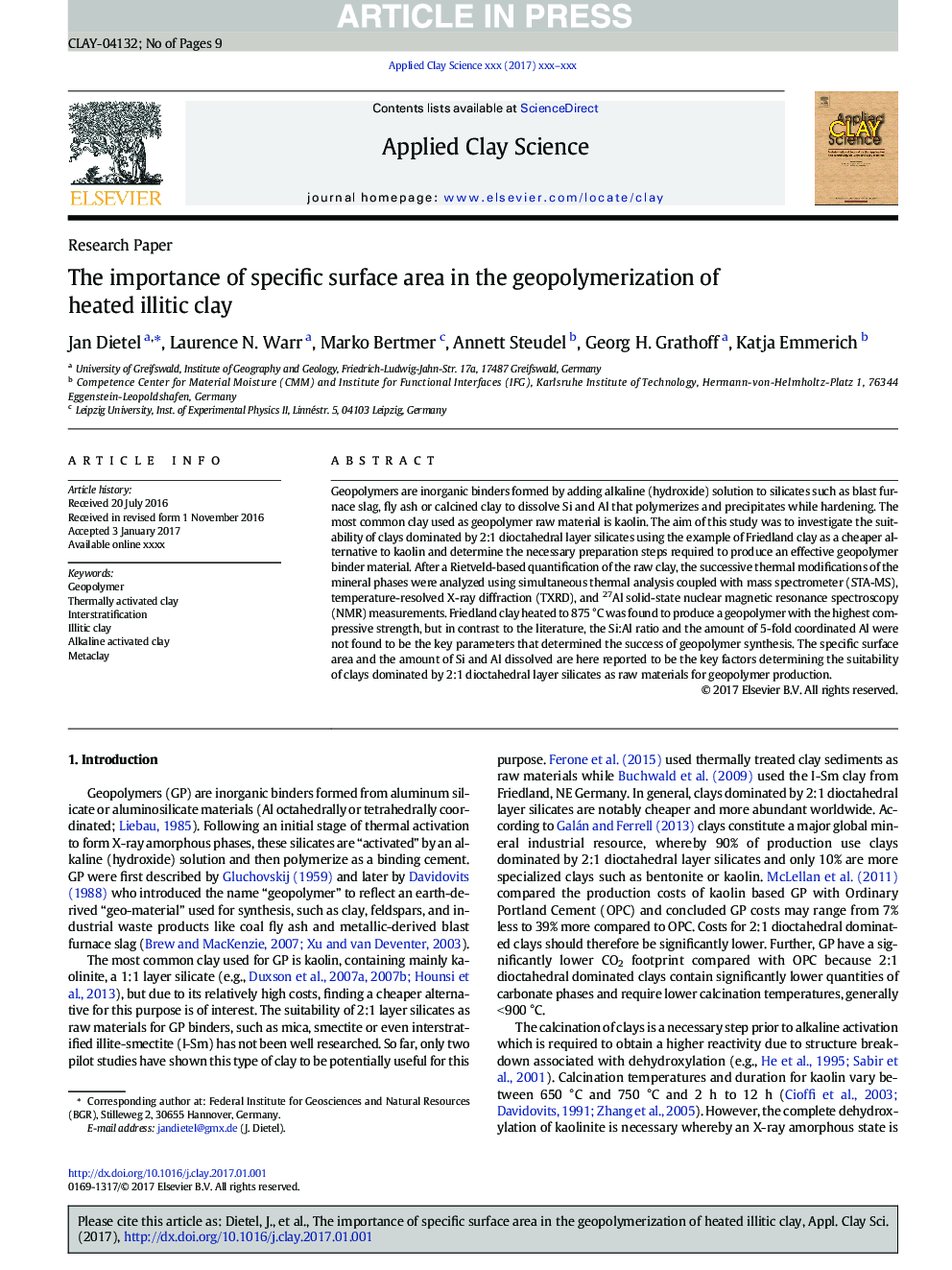| Article ID | Journal | Published Year | Pages | File Type |
|---|---|---|---|---|
| 5468718 | Applied Clay Science | 2017 | 9 Pages |
Abstract
Geopolymers are inorganic binders formed by adding alkaline (hydroxide) solution to silicates such as blast furnace slag, fly ash or calcined clay to dissolve Si and Al that polymerizes and precipitates while hardening. The most common clay used as geopolymer raw material is kaolin. The aim of this study was to investigate the suitability of clays dominated by 2:1 dioctahedral layer silicates using the example of Friedland clay as a cheaper alternative to kaolin and determine the necessary preparation steps required to produce an effective geopolymer binder material. After a Rietveld-based quantification of the raw clay, the successive thermal modifications of the mineral phases were analyzed using simultaneous thermal analysis coupled with mass spectrometer (STA-MS), temperature-resolved X-ray diffraction (TXRD), and 27Al solid-state nuclear magnetic resonance spectroscopy (NMR) measurements. Friedland clay heated to 875 °C was found to produce a geopolymer with the highest compressive strength, but in contrast to the literature, the Si:Al ratio and the amount of 5-fold coordinated Al were not found to be the key parameters that determined the success of geopolymer synthesis. The specific surface area and the amount of Si and Al dissolved are here reported to be the key factors determining the suitability of clays dominated by 2:1 dioctahedral layer silicates as raw materials for geopolymer production.
Keywords
Related Topics
Physical Sciences and Engineering
Earth and Planetary Sciences
Geochemistry and Petrology
Authors
Jan Dietel, Laurence N. Warr, Marko Bertmer, Annett Steudel, Georg H. Grathoff, Katja Emmerich,
